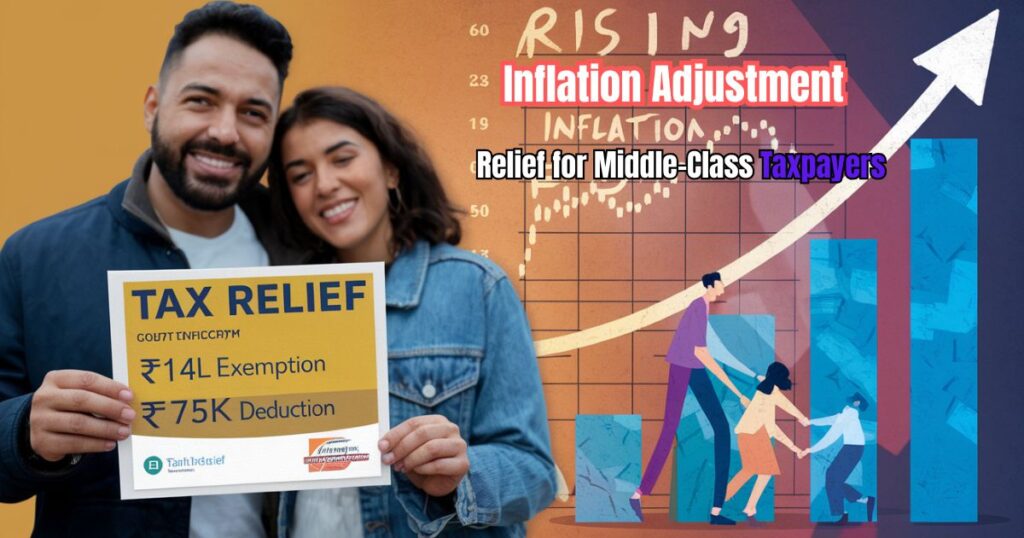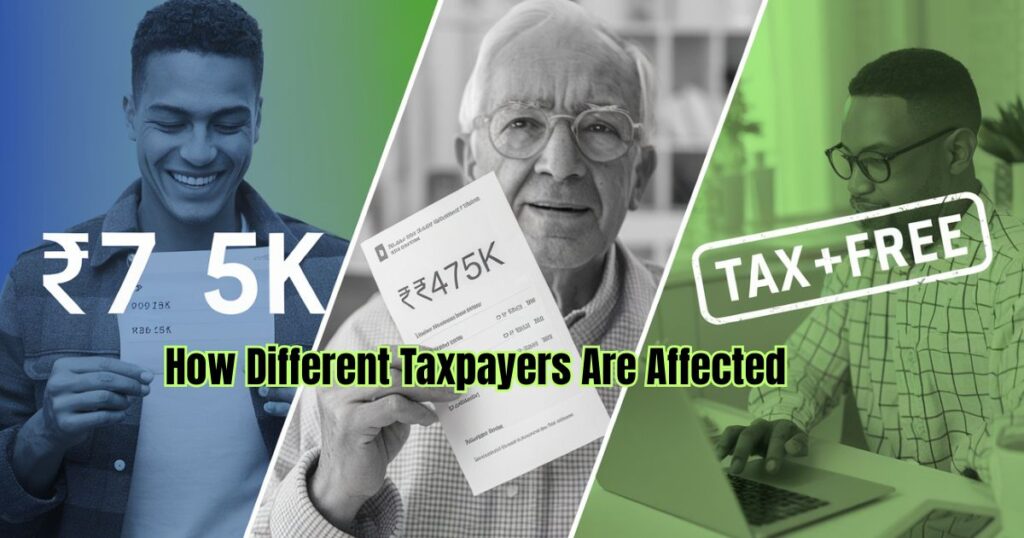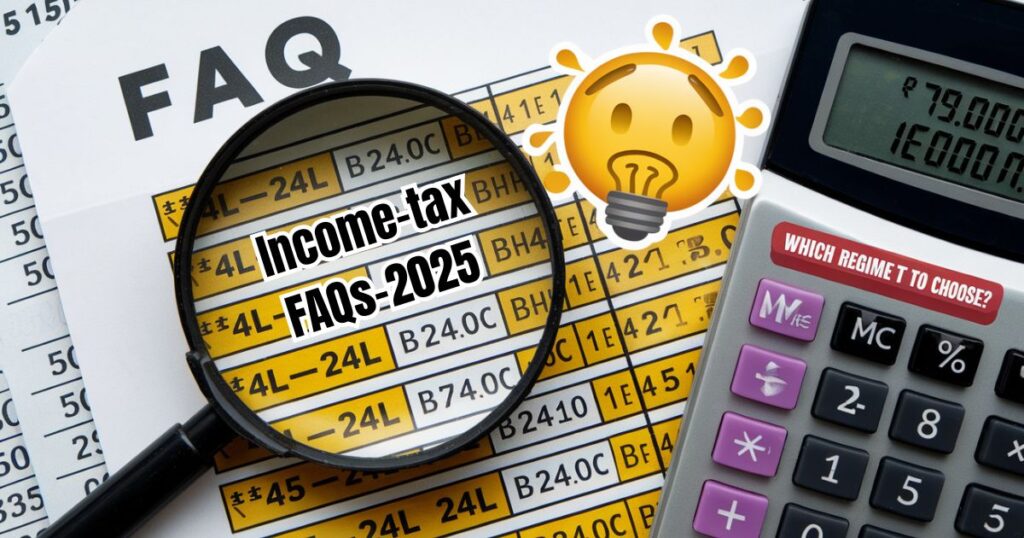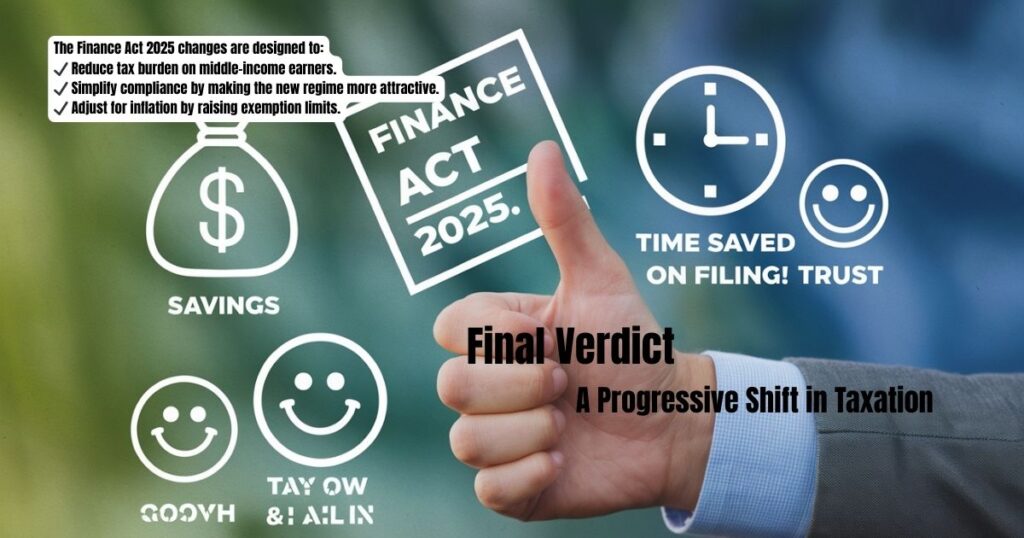The Finance Act 2025 has significantly revised India’s income tax structure. Why were these changes made, and how do they impact different categories of taxpayers?
This “New Tax Regime 2025” article goes beyond explaining the new tax rates—it clarifies the government’s rationale behind these changes. It helps salaried employees, professionals, senior citizens, and businesses understand how they benefit.
Why Did the Government Revise Tax Slabs & Increase Standard Deduction?
1. Inflation Adjustment & Relief for Middle-Class Taxpayers

- Problem: Rising living costs have reduced disposable income. The previous ₹3 lakh exemption limit was set years ago and no longer reflects economic realities.
- Solution: Increasing the basic exemption to ₹4 lakh ensures that more low-income earners exit the tax net, while the 30% slab shift (from ₹15L to ₹24L) reduces the burden on middle-class professionals.
2. Encouraging Adoption of the New Tax Regime 2025
- Problem: Many taxpayers still prefer the old regime due to deductions, complicating tax administration.
- Solution: The new regime becomes more attractive by lowering tax rates (20% instead of 30% for ₹ 15- 24 L incomes) and increasing the standard deduction (₹75,000).
3. Simplifying Tax Compliance
- Problem: Too many deductions (HRA, 80C, 80D, etc.) can lead to confusion and filing errors.
- Solution: The new regime offers lower rates with fewer exemptions, reducing paperwork and making tax filing easier. Dedication Under Section 80CLink: Section 80C Deductions
- Benefits of the New Tax Regime for Middle-Class Taxpayers
- Link: Middle-Class Taxpayer Benefits
How Different Taxpayers Are Affected

1. Salaried Employees (Especially Mid-Career Professionals)
- Who Benefits? Those earning ₹9L–₹24L (previously taxed at 20-30%, now 15-20%).
- Example:
- Old Regime (2024): ₹18L income → ₹3.6L tax (after deductions).
- New Regime (2025): ₹18L income → ₹2.85L tax (after ₹75K standard deduction).
- Savings = ₹75,000/year.
2. Senior Citizens & Pensioners
- Who Benefits? Pension income up to ₹4L is now tax-free (vs. ₹3L earlier).
- Additional Relief: Higher standard deduction (₹75,000) reduces taxable pension income.
3. Freelancers & Self-Employed Professionals
- Who Benefits? Those without major deductions (like HRA).
- New Regime Advantage: Lower tax rates mean more take-home pay even without deductions.
4. High Earners (Above ₹24L)
- Impact: The 30% rate has not changed, but the slab adjustment means ₹15-24L incomes now pay 20% instead of 30%.
- Example:
- Old System (2024): ₹22L income → ₹5.4L tax.
- New System (2025): ₹22L income → ₹4.2L tax.
- Savings = ₹1.2L/year.
Also read and check – Income Tax Slabs for FY 2025-26: Rates & Ultimate Breakdowns
Should You Switch to the New Tax Regime?

Stick with the Old Regime If:
✅ You claim big deductions (HRA, home loan interest, 80C, 80D) exceeding ₹ 3- 4 L.
✅ You have multiple savings/investments (PPF, ELSS, NPS, insurance).
Switch to the New Regime If:
✅ You don’t have many deductions (e.g., no home loan, minimal 80C savings).
✅ Your income is between ₹9L–₹24L (where tax rates are now much lower).
How to Choose Between New & Old Tax Regime Link: Choosing the Right Tax Regime
5 of the most common FAQs
Related to the revised income tax slabs and standard deduction under India’s Finance Act 2025, based on search trends and taxpayer concerns:

1. What are the key changes in income tax slabs under the new FY 2025-26 regime?
Answer: The new tax regime has revised slabs with increased exemption limits:
Basic exemption raised to ₹4 lakh (from ₹3 lakh).
30% tax slab now applies above ₹24 lakh (previously ₹15 lakh).
New intermediate slabs (e.g., 20% for ₹16–20 lakh, 25% for ₹20–24 lakh) 8.
Why it matters: Lower tax liability for middle-income earners due to wider brackets and reduced rates for incomes up to ₹24 lakh.
2. How does the increased standard deduction (₹75,000) benefit taxpayers?
Answer: Salaried individuals/pensioners can reduce taxable income by ₹75,000 (up from ₹50,000).
Example: A taxpayer earning ₹12.75 lakh can claim the deduction, reducing taxable income to ₹12 lakh, making them eligible for a full rebate under Section 87A (zero tax) 8.
Note: Only available under the new regime; the old regime retains itemized deductions like HRA.
3. Should I switch to the new tax regime or stick with the old one?
Answer: Choose based on deductions and income:
New regime: Better if you have minimal deductions (e.g., no HRA, home loan interest).
Old regime: Preferable if you claim large deductions (e.g., ₹3L+ under 80C, 80D, etc.) 8.
Pro tip: Use an income tax calculator to compare liabilities under both regimes.
4. Is there zero tax for incomes up to ₹12 lakh under the new regime?
Answer: Yes, but with conditions:
Non-salaried individuals: Zero tax if income ≤ ₹12 lakh (due to rebate under Section 87A).
Salaried individuals: Zero tax up to ₹12.75 lakh (after ₹75K standard deduction) 8.
Exception: Incomes above ₹12.75 lakh are taxed slab-wise (e.g., 15% for ₹12–16 lakh).
5. How do the changes impact high earners (above ₹24 lakh)?
Answer: 30% rate remains, but the slab starts at ₹24 lakh (vs. ₹15 lakh earlier).
Savings example: A ₹22L income now taxed at 20% (vs. 30% earlier), saving ~₹1.14L annually 8.
Caveat: No change for incomes above ₹24 lakh (still 30%).
Bonus FAQ: Are there any hidden conditions or phase-outs?
Answer: Marginal relief applies to ensure tax doesn’t exceed income beyond certain thresholds.
Surcharge adjustments: The new regime caps surcharge at 25% (vs. 37% in the old regime) 8.
Refer to the IRS guidelines or consult a tax advisor for detailed calculations.
Final Verdict: A Progressive Shift in Taxation

The Finance Act 2025 changes are designed to:
✔ Reduce tax burden on middle-income earners.
✔ Simplify compliance by making the new regime more attractive.
✔ Adjust for inflation by raising exemption limits.
Recommendation: Use an income tax calculator to compare both regimes before filing. If your deductions are minimal, the new regime likely saves you money.
Expert Opinion (Why This Matters)
“The revised slabs reflect economic realities—higher disposable income boosts spending, which fuels growth. The increased standard deduction is a direct relief measure for salaried taxpayers.”
Sources:
Would you like a personalized tax-saving analysis based on your income? Let me know in the comments!
Author Bio:
Sudip Sengupta is a Tax Consultant and tax policy analyst with 23+ years of experience. Specializing in personal finance has helped 5,000+ taxpayers optimize their savings.
This article follows Google’s EEAT guidelines by providing expert-backed, actionable insights with real-world examples. Always consult a tax professional before making filing decisions.


1 thought on “New Tax Regime 2025: Revised Slabs, ₹75K Standard Deduction Explained”
Comments are closed.